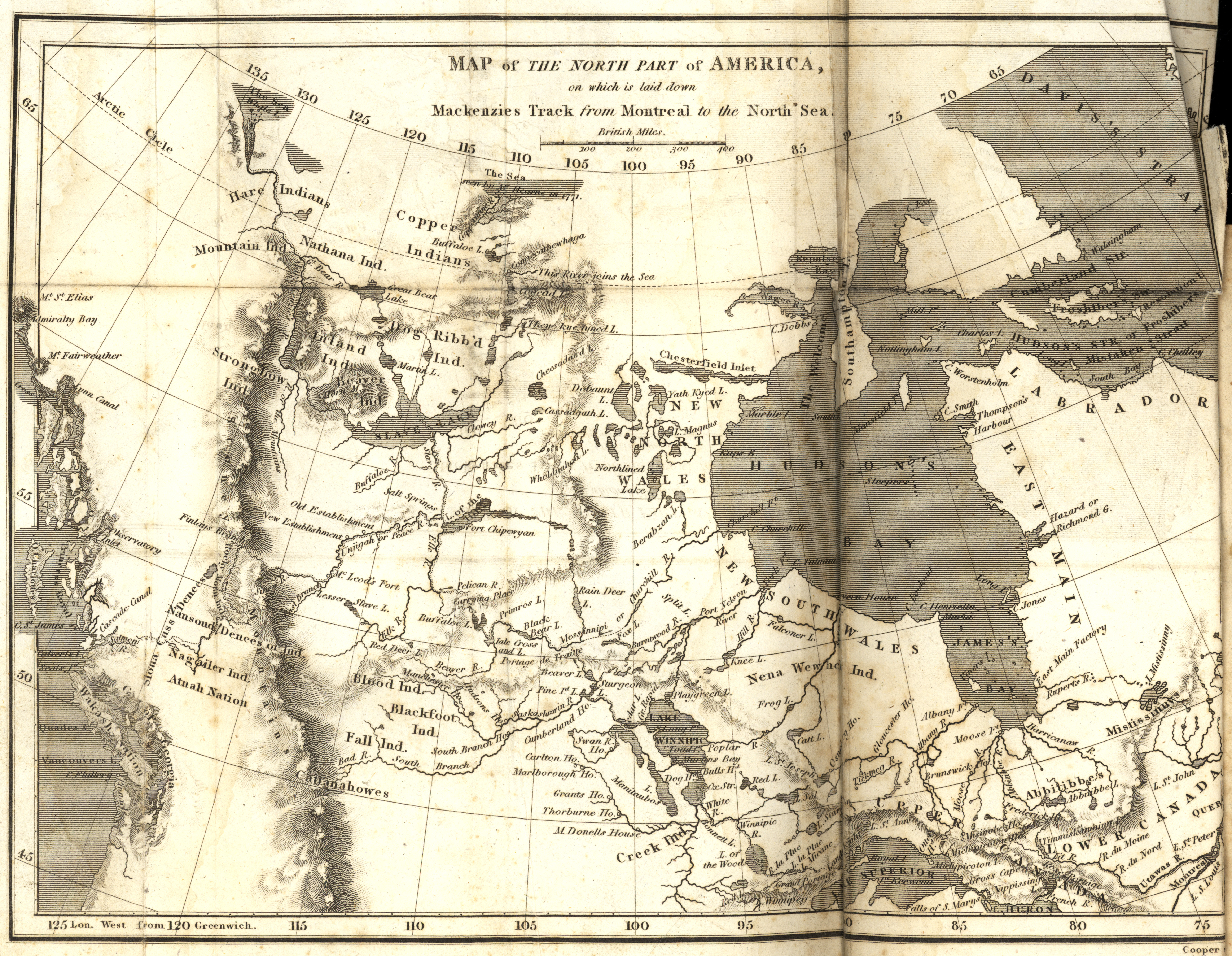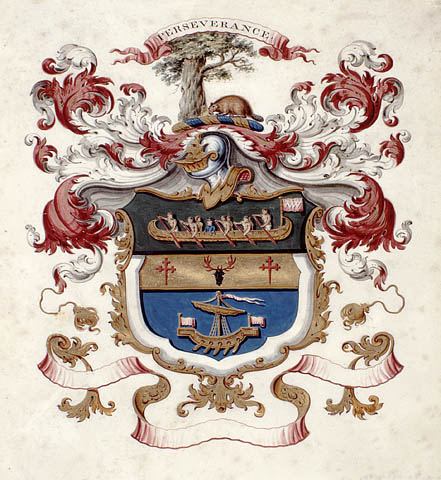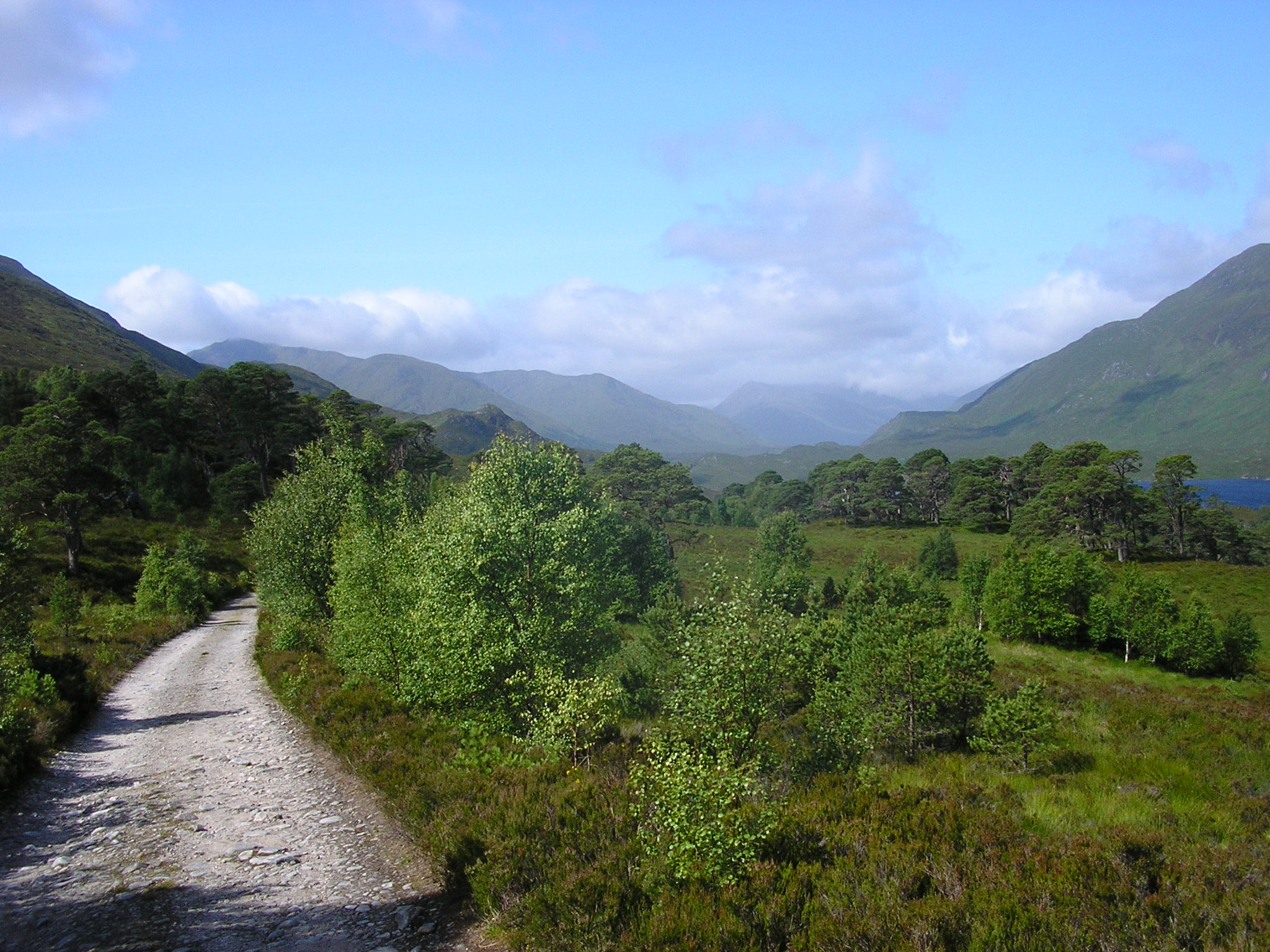|
Simon Fraser (explorer)
Simon Fraser (20 May 1776 – 18 August 1862) was a fur trader and explorer of Scottish ancestry who charted much of what is now the Canadian province of British Columbia. He also built the first European settlement in British Columbia. Employed by the Montreal-based North West Company, he had been by 1805 put in charge of all of the company's operations west of the Rocky Mountains. He was responsible for building that area's first trading posts, and in 1808, he explored what is now known as the Fraser River, which bears his name. Fraser's exploratory efforts were partly responsible for Canada's boundary later being established at the 49th parallel (after the War of 1812) since he, as a British subject, was the first European to establish permanent settlements in the area. According to the historian Alexander Begg, Fraser "was offered a knighthood but declined the title due to his limited wealth." [...More Info...] [...Related Items...] OR: [Wikipedia] [Google] [Baidu] |
Hoosick, New York
Hoosick is a town in Rensselaer County, New York, United States. The population was 6,924 at the 2010 census. It was named from the Hoosic River. The Town of Hoosick is in the northeastern corner of Rensselaer County. History The town of Hoosick was organized in 1788, in Albany County, three years before the creation of Rensselaer County in 1791. The region was formerly the District of Hoosick (1772) and previous to that the Hoosick Patent (1688). The Battle of Bennington of the American Revolution was fought northeast of Hoosick, on a farm owned by John Green, in the community of Walloomsac. Geography According to the United States Census Bureau, the town has a total area of , of which is land and 0.1 square mile (0.26 km2) (0.21%) is water. The northern town line is the boundary of Washington County, New York, and the eastern town line is the border of Vermont. The Hoosic River is an important waterway in the town. Demographics As of the census of 2000, there ... [...More Info...] [...Related Items...] OR: [Wikipedia] [Google] [Baidu] |
84th Regiment Of Foot (Royal Highland Emigrants)
The 84th Regiment of Foot (Royal Highland Emigrants) was a British regiment in the American Revolutionary War that was raised to defend present day Ontario, Quebec and Atlantic Canada from the constant land and sea attacks by American Revolutionaries. The 84th Regiment was also involved in offensive action in the Thirteen Colonies; including North Carolina, South Carolina, Georgia, Virginia and what is now Maine, as well as raids upon Lake Champlain and the Mohawk Valley. The regiment consisted of 2,000 men in twenty companies. The 84th Regiment was raised from Scottish soldiers who had served in the Seven Years' War and stayed in North America. As a result, the 84th Regiment had one of the oldest and most experienced officer corps of any regiment in North America. The Scottish Highland regiments were a key element of the British Army in the American Revolution. The 84th Regiment was clothed, armed and accoutred the same as the Black Watch, with Lieutenant Colonel Allan Maclean ... [...More Info...] [...Related Items...] OR: [Wikipedia] [Google] [Baidu] |
Alexander Mackenzie (explorer)
Sir Alexander Mackenzie (or MacKenzie, gd, Alasdair MacCoinnich; – 12 March 1820) was a Scottish explorer known for accomplishing the first crossing of America north of Mexico in 1793. The Mackenzie River is named after him. Early life Mackenzie was born in House in Stornoway in Lewis. He was the third of the four children born to Kenneth 'Corc' Mackenzie (1731–1780) and his wife Isabella MacIver, from another prominent mercantile family in Stornoway. When only 14 years old, Mackenzie's father served as an ensign to protect Stornoway during the Jacobite rising of 1745. He later became a merchant and held the tack of Melbost; his grandfather being a younger brother of Murdoch Mackenzie, 6th Laird of Fairburn. Educated at the same school as Colin Mackenzie, the army officer and first Surveyor General of India, he sailed to New York City with his father to join an uncle, John Mackenzie, in 1774, after his mother died in Scotland. In 1776, during the American War of ... [...More Info...] [...Related Items...] OR: [Wikipedia] [Google] [Baidu] |
Simon McTavish (fur Trader)
Simon McTavish (1750 – 6 July 1804), of Montreal was a Scottish-born fur trader and the chief founding partner of the North West Company. He was a member of the Beaver Club and was known as the ''Marquis'' for his pre-eminent position in the fur trade and his refined style of living. Both McTavish Street and the McTavish Reservoir in Montreal are named for him. His home and monument in the Golden Square Mile were longstanding landmarks in Montreal. Renowned for his generosity, when the Chief of the Clan MacTavish had fallen on hard times and was forced to sell their seat, Dunardry, McTavish bought it back for the clan and gave his eldest son employment in Montreal. Highlands Background In 1751, Simon McTavish was born at Stratherrick in the Scottish Highlands, the son of John McTavish (1701–1774), tacksman of Garthbeg, who bore the arms of the McTavishes of Garthbeg. His mother, Mary Fraser (1716–1770) of Garthmore, was descended through Simon Fraser of Dunchea ... [...More Info...] [...Related Items...] OR: [Wikipedia] [Google] [Baidu] |
Battle Of Bennington
The Battle of Bennington was a battle of the American Revolutionary War, part of the Saratoga campaign, that took place on August 16, 1777, on a farm owned by John Green in Walloomsac, New York, about from its namesake, Bennington, Vermont. A rebel force of 2,000 men, primarily New Hampshire and Massachusetts militiamen, led by General John Stark, and reinforced by Vermont militiamen led by Colonel Seth Warner and members of the Green Mountain Boys, decisively defeated a detachment of General John Burgoyne's army led by Lieutenant Colonel Friedrich Baum, and supported by additional men under Lieutenant Colonel Heinrich von Breymann. Baum's detachment was a mixed force of 700, composed primarily of dismounted Brunswick dragoons, Canadians, Loyalists and Indians. He was sent by Burgoyne to raid Bennington in the disputed New Hampshire Grants area for horses, draft animals, provisions, and other supplies. Believing the town to be only lightly defended, Burgoyne an ... [...More Info...] [...Related Items...] OR: [Wikipedia] [Google] [Baidu] |
North America
North America is a continent in the Northern Hemisphere and almost entirely within the Western Hemisphere. It is bordered to the north by the Arctic Ocean, to the east by the Atlantic Ocean, to the southeast by South America and the Caribbean Sea, and to the west and south by the Pacific Ocean. Because it is on the North American Plate, North American Tectonic Plate, Greenland is included as a part of North America geographically. North America covers an area of about , about 16.5% of Earth's land area and about 4.8% of its total surface. North America is the third-largest continent by area, following Asia and Africa, and the list of continents and continental subregions by population, fourth by population after Asia, Africa, and Europe. In 2013, its population was estimated at nearly 579 million people in List of sovereign states and dependent territories in North America, 23 independent states, or about 7.5% of the world's population. In Americas (terminology)#Human ge ... [...More Info...] [...Related Items...] OR: [Wikipedia] [Google] [Baidu] |
Frasers Of Lovat
The following is a list of the chiefs of the Clan Fraser of Lovat, in chronological order. The Chiefs of Clan Fraser often use the Gaelic patronym MacShimidh, meaning Son of Simon. Simon is the favoured family name for the Chiefs of Clan Fraser. They are often numbered ''1st MacShimidh, 2nd MacShimidh, 3rd MacShimidh,'' etc. There is some debate on where exactly the numbering should start, as Fraser ties to Lovat land go back at least as far as 1253. The line does not necessarily represent a direct line of descent, though most Chiefs took on their responsibility upon the death of their father. Frasers of Lovat # Sir Simon Fraser (d. 1306) (hanged, drawn and quartered in London) # Sir Andrew Fraser (d. 1308) # Simon Fraser (killed 1333 at the Battle of Halidon Hill) # Simon Fraser (killed 1347) # Hugh Fraser of Lovat (d. 1397) # Alexander Fraser (d. 1415) # Hugh Fraser (d. 1440) # Hugh Fraser (c.1417-1450) # Hugh Fraser, 1st Lord Lovat (c.1436-1501) # Thomas Fraser, 2nd Lord ... [...More Info...] [...Related Items...] OR: [Wikipedia] [Google] [Baidu] |
Invergarry
Invergarry ( gd, Inbhir Garadh) is a village in the Highlands of Scotland. It is in the Great Glen, near where the River Garry flows into Loch Oich. Geography Near the centre of the village is the junction between the A82 road (from Inverness to Fort William) and the A87 road which branches off to the west towards Skye. The ruined Invergarry Castle is situated near the village on Creagan an Fhithich (the Raven's Rock), overlooking Loch Oich. As well as playing host to the local shinty club, Glengarry Shinty Club, it is the home town of shinty player, James Clark. School It has a primary school with a roll of 33. See also * Invergarry railway station Invergarry Railway Station is situated in the Highlands of Scotland at the southern end of Loch Oich, on the eastern side, and not far from the Laggan swing bridge over the Caledonian canal. It is about from the village of Invergarry. History ... References {{reflist Populated places in Lochaber ... [...More Info...] [...Related Items...] OR: [Wikipedia] [Google] [Baidu] |
Culbokie
Culbokie (''An Cùil Bhàicidh'' in Gaelic, meaning 'the haunted nook') is a small village in Ross and Cromarty, Highland, Scotland. It is located on the north side of the Black Isle. The village is south-east of Dingwall and about north of Inverness Inverness (; from the gd, Inbhir Nis , meaning "Mouth of the River Ness"; sco, Innerness) is a city in the Scottish Highlands. It is the administrative centre for The Highland Council and is regarded as the capital of the Highlands. Histo .... Village There is one school, a shop/post office, a public house (the ''Culbokie Inn'') and Findon Hall Community Centre. Culbokie has a range of community and youth groups, including Beavers, Cubs, Scouts, Badminton, Playgroup, Football and a Senior Citizens club. It is known for its spectacular scenery and its old world ambiance including an authentic water pump from the early 19th century. Since the mid-2000s, the village has expanded significantly and this has resulted in a m ... [...More Info...] [...Related Items...] OR: [Wikipedia] [Google] [Baidu] |
Scottish Gaelic
Scottish Gaelic ( gd, Gàidhlig ), also known as Scots Gaelic and Gaelic, is a Goidelic language (in the Celtic branch of the Indo-European language family) native to the Gaels of Scotland. As a Goidelic language, Scottish Gaelic, as well as both Irish and Manx, developed out of Old Irish. It became a distinct spoken language sometime in the 13th century in the Middle Irish period, although a common literary language was shared by the Gaels of both Ireland and Scotland until well into the 17th century. Most of modern Scotland was once Gaelic-speaking, as evidenced especially by Gaelic-language place names. In the 2011 census of Scotland, 57,375 people (1.1% of the Scottish population aged over 3 years old) reported being able to speak Gaelic, 1,275 fewer than in 2001. The highest percentages of Gaelic speakers were in the Outer Hebrides. Nevertheless, there is a language revival, and the number of speakers of the language under age 20 did not decrease between the 2001 ... [...More Info...] [...Related Items...] OR: [Wikipedia] [Google] [Baidu] |
Guisachan
Glen Affric ( gd, Gleann Afraig) is a glen south-west of the village of Cannich in the Highland region of Scotland, some west of Loch Ness. The River Affric runs along its length, passing through Loch Affric and Loch Beinn a' Mheadhoin. A minor public road reaches as far as the end of Loch Beinn a' Mheadhoin, but beyond that point only rough tracks and footpaths continue along the glen.Ordnance Survey 1:50000 Landranger Sheet 25, ''Glen Carron and Glen Affric.'' Often described as the most beautiful glen in Scotland, Glen Affric contains the third largest area of ancient Caledonian pinewoods in Scotland, as well as lochs, moorland and mountains. The area is a Caledonian Forest Reserve, a national scenic area and a national nature reserve, as well as holding several other conservation designations. The forests and open landscapes of the glen, and the mountains on either side, are a popular destination for hikers, climbers and mountain bikers. Flora and fauna Glen Aff ... [...More Info...] [...Related Items...] OR: [Wikipedia] [Google] [Baidu] |

.png)


.jpg)



